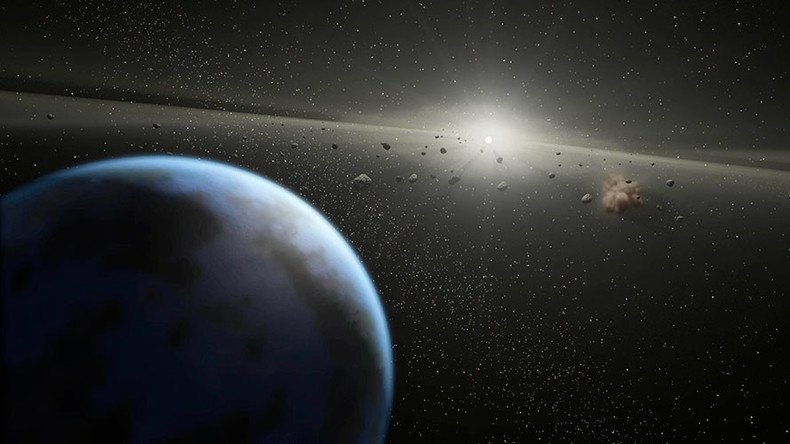Giant asteroid ‘Florence’ whizzes past Earth revealing two moons (IMAGES, VIDEOS)

The largest asteroid to come so close to Earth in over a century whizzed by the planet Friday without a hitch - and revealed two tiny moons in the process.
The highly anticipated asteroid ‘3122 Florence,’ measuring a whopping 2.8 miles (4.5 kilometers) in width, came within 4.4 million miles (7 million km) of Earth. The gap is the equivalent of 18 times the distance from our planet to the moon.
“Florence is the largest asteroid to pass by our planet this close since the NASA program to detect and track near-Earth asteroids began,” Paul Chodas, of NASA’s Jet Propulsion Laboratory, said of the fly-by.
READ MORE: Asteroid size of 40 football fields to scoot by Earth in September
City-size asteroid Florence, seen today as it zipped just 4.4 million miles past Earth. (Images: A.Q. Vodniza) https://t.co/cqHaPb9aCXpic.twitter.com/P6Tpycbmdk
— Corey S. Powell (@coreyspowell) September 1, 2017
Radar images of the giant rock obtained from NASA’s Goldstone Solar System center in California have provided the first-up close views of Florence, named after 19th-century English nursing pioneer Florence Nightingale.
The Center for Near Earth Object Studies (CNEOS) describes the asteroid as being fairly round with a ridge along its equator, a large crater and two large flat regions. Optical measurements confirmed that the space rock rotates once every two-and-a-half hours.
The radar images also revealed that the asteroid has two small moons orbiting it.
Here's a close-up of that second 'lunar eclipse' of a newly discovered moon of asteroid 3122 #Florence as it flew past Earth yesterday - pic.twitter.com/ETkTa8mYRk
— Dave Dickinson (@Astroguyz) September 2, 2017
#TeamRadar from @NAICobservatory observed 3122 Florence during its closest approach. It has two moons! #AreciboSciencepic.twitter.com/vDLEDxzMG3
— Arecibo Radar (@AreciboRadar) September 2, 2017
Though their sizes are not yet known, the moons are estimated to measure between 100-300 meters (300-1,000 feet) across. The time it takes each moon to orbit Florence is also not clear, but appears to be roughly 8 hours for the inner moon and up to 27 hours for the outer satellite, according to the CNEOS.
Having reached its closest approach to Earth early on September 1, Florence is now slowly receding from our planet.
Additional radar observations will be carried out at Goldstone center and at the National Science Foundation’s Arecibo Observatory in Puerto Rico in the coming week, which are expected to provide more surface detail about Florence, and precise estimates of the orbital periods of the two moons.
Such measurements will, in turn, help scientists estimate the total mass and density of the asteroid.












